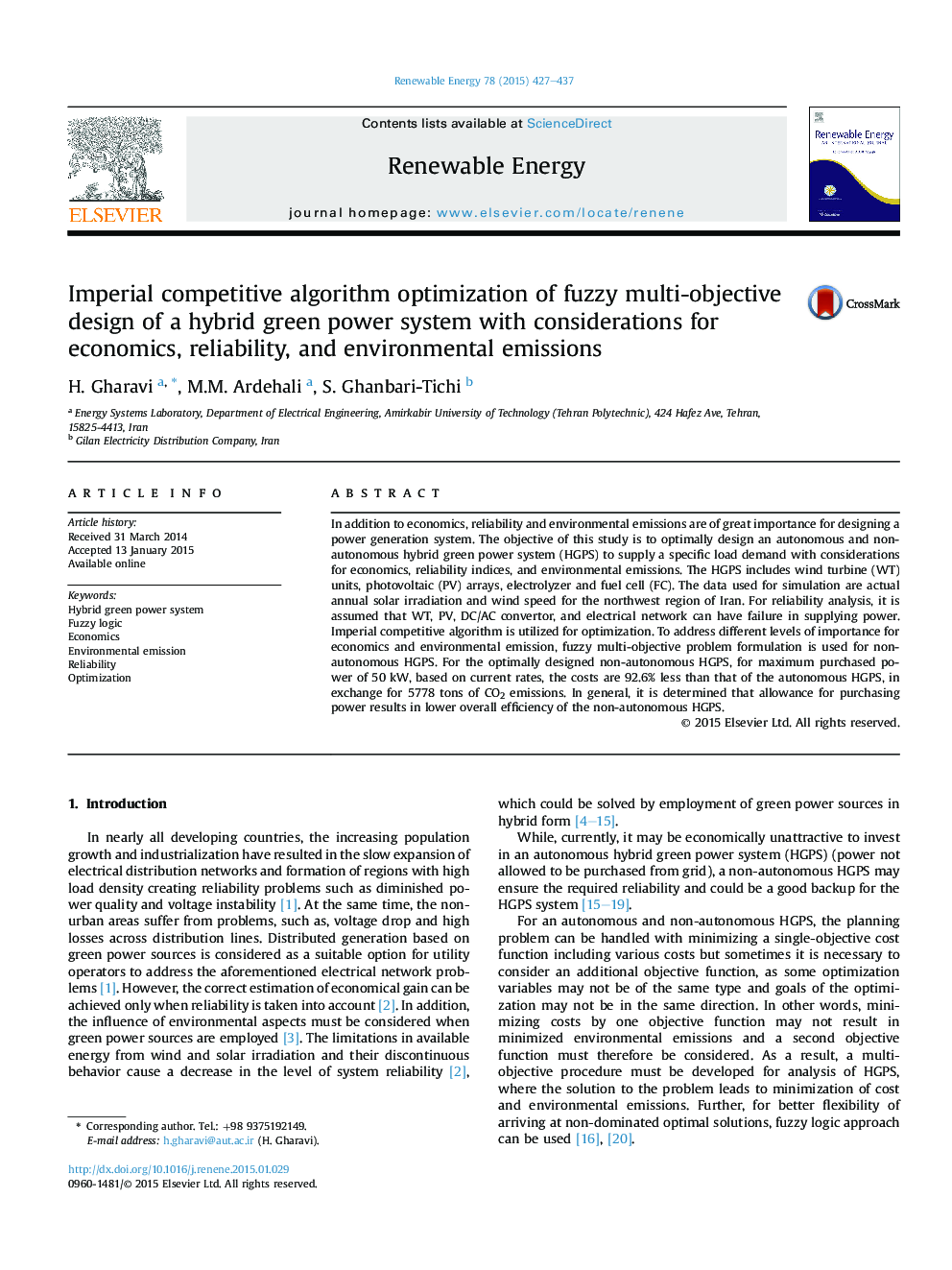| Article ID | Journal | Published Year | Pages | File Type |
|---|---|---|---|---|
| 6767484 | Renewable Energy | 2015 | 11 Pages |
Abstract
In addition to economics, reliability and environmental emissions are of great importance for designing a power generation system. The objective of this study is to optimally design an autonomous and non-autonomous hybrid green power system (HGPS) to supply a specific load demand with considerations for economics, reliability indices, and environmental emissions. The HGPS includes wind turbine (WT) units, photovoltaic (PV) arrays, electrolyzer and fuel cell (FC). The data used for simulation are actual annual solar irradiation and wind speed for the northwest region of Iran. For reliability analysis, it is assumed that WT, PV, DC/AC convertor, and electrical network can have failure in supplying power. Imperial competitive algorithm is utilized for optimization. To address different levels of importance for economics and environmental emission, fuzzy multi-objective problem formulation is used for non-autonomous HGPS. For the optimally designed non-autonomous HGPS, for maximum purchased power of 50Â kW, based on current rates, the costs are 92.6% less than that of the autonomous HGPS, in exchange for 5778 tons of CO2 emissions. In general, it is determined that allowance for purchasing power results in lower overall efficiency of the non-autonomous HGPS.
Related Topics
Physical Sciences and Engineering
Energy
Renewable Energy, Sustainability and the Environment
Authors
H. Gharavi, M.M. Ardehali, S. Ghanbari-Tichi,
